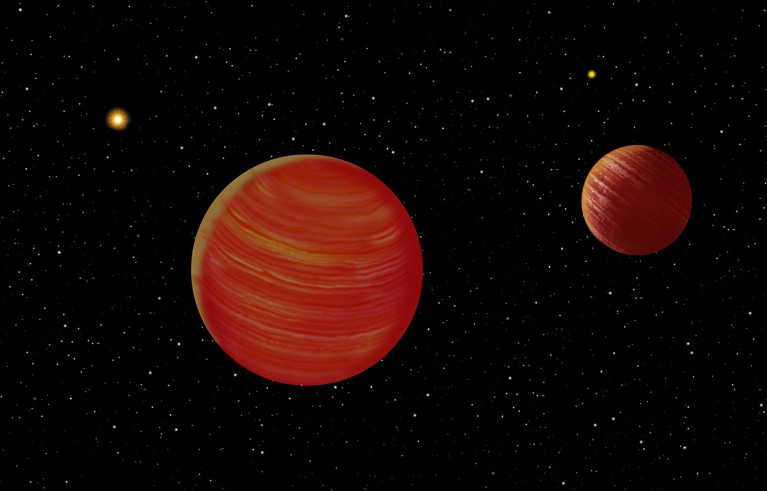- RESEARCH HIGHLIGHT
Smallest known starquakes are detected with a subtle shift of colour

Starquakes detected on the star ε Indi (left; artist’s impression) could help astronomers to understand its internal structure. Credit: International Gemini Observatory/NOIRLab/NSF/AURA/Lomberg J. (CC BY 4.0)
Access options
Access Nature and 54 other Nature Portfolio journals
Get Nature+, our best-value online-access subscription
$29.99 / 30 days
cancel any time
Subscribe to this journal
Receive 51 print issues and online access
$199.00 per year
only $3.90 per issue
Rent or buy this article
Prices vary by article type
from$1.95
to$39.95
Prices may be subject to local taxes which are calculated during checkout
Nature 628, 239 (2024)
doi: https://doi.org/10.1038/d41586-024-00965-1
References
Campante, T. L. et al. Astron. & Astrophys. 683, L16 (2024).



